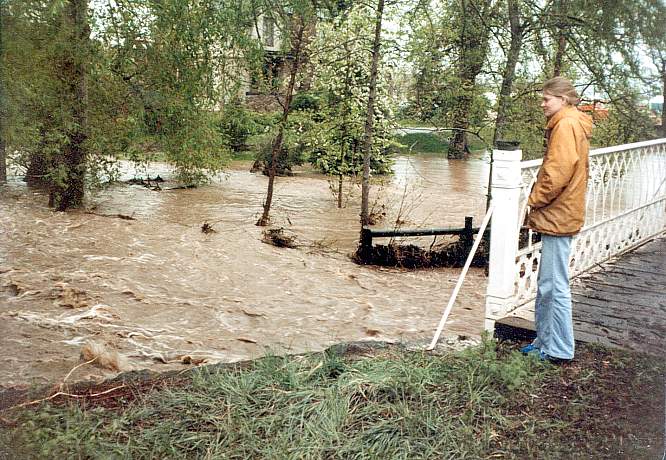|
|

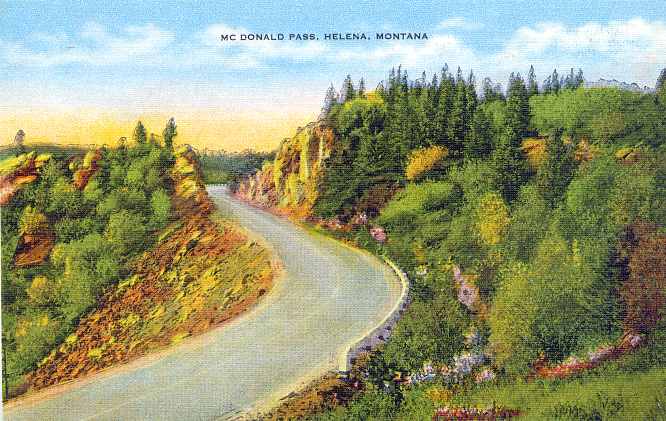
| A romanticized
postcard view of the eastern slope of McDonald Pass, 1930s-40s.
The scene of many crashes, U.S. 10 over the pass was two-lane
blacktop until the 1960s. |
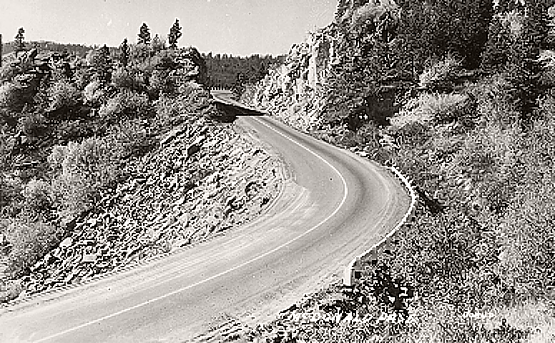
|
The
photo that inspired the postcard shows the somewhat harsher
reality of the route.
|

|
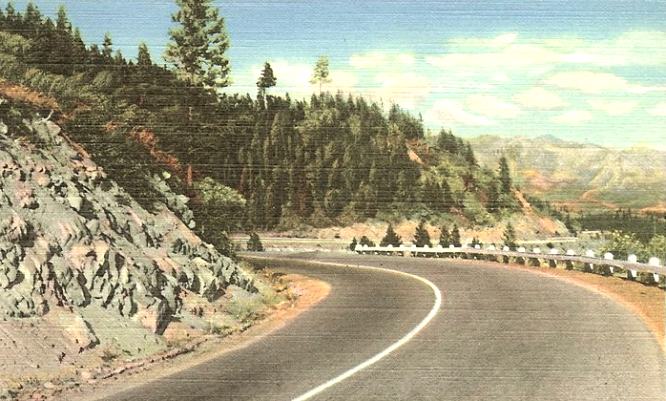
Another 1930s-40s
view of the eastern slope.

|
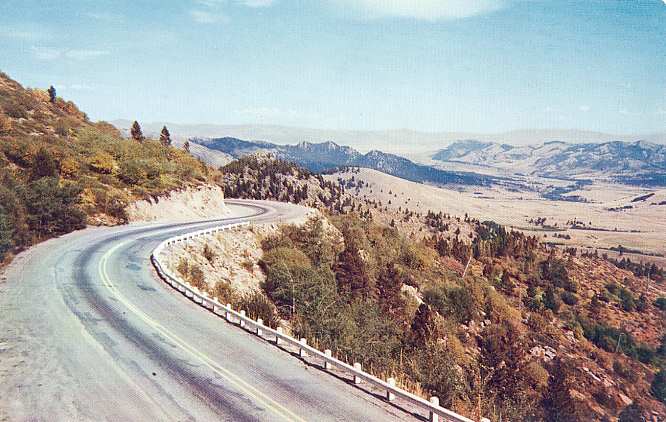
McDonald Pass,
1950s, looking across the Helena Valley.

|

A similar 1950s
view, taken in spring or early summer.

|
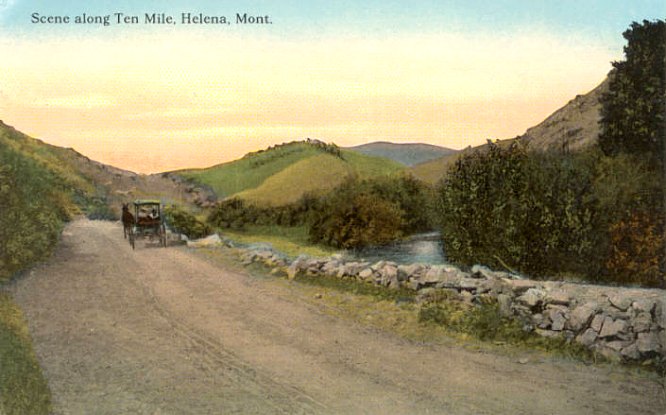
What is now US
12 was a dirt road in the 1890s.

|
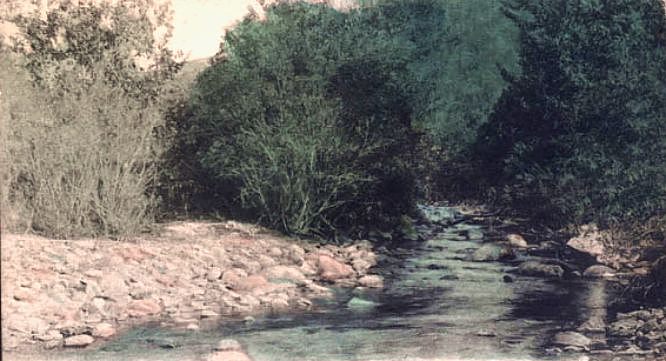
Ten Mile Creek,
west of Helena, ca. 1900.
|


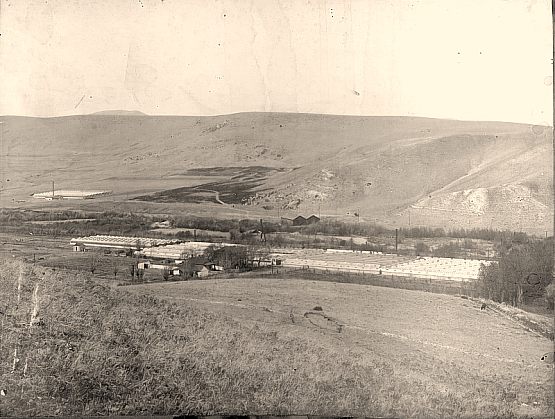
State
Nursery & Seed Co., 1901. Charles A. Broadwater, Helena
railroad magnate and builder of the Broadwater Hotel and Natatorium,
sold to one Mr. T. E. Mills of London, England the property
for the nursery in the late 1890s. Mills did the landscaping
for the nearby Broadwater resort, and by 1914 had built six
acres of greenhouses in the little valley on the banks of Ten
Mile Creek.
COURTESY OF SCOTT NELSON - THE
BRIDGEWORKS CONSERVANCY
|
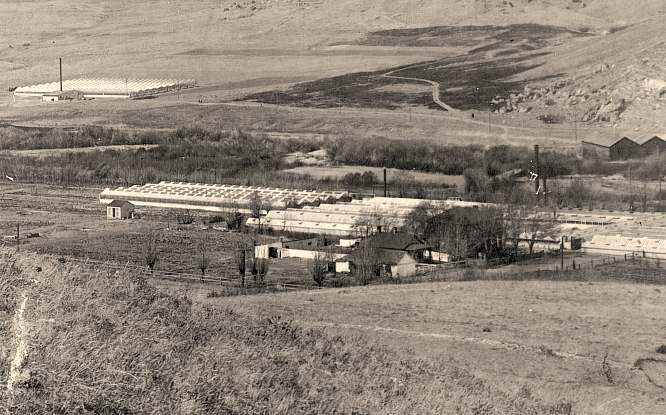
Detail of previous
photo.
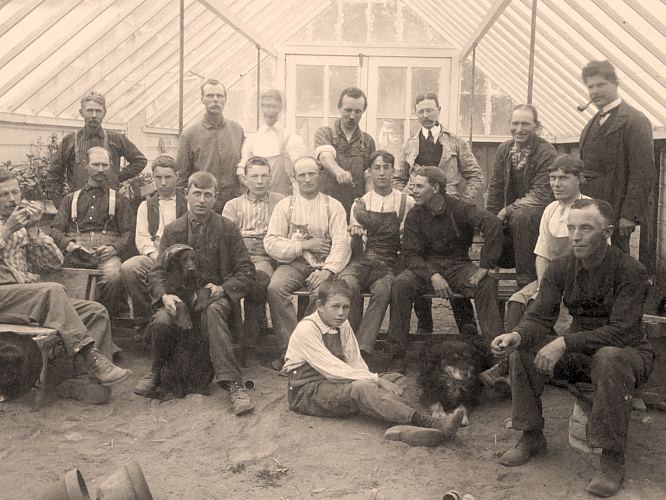
State
Nursery & Seed Co. employees, 1897. Nursery owner T. E.
Mills is on the right, smoking a pipe.
Note the dogs, cat and bird. • CLICK ON
IMAGE TO ENLARGE •
COURTESY OF SCOTT NELSON - THE
BRIDGEWORKS CONSERVANCY
|
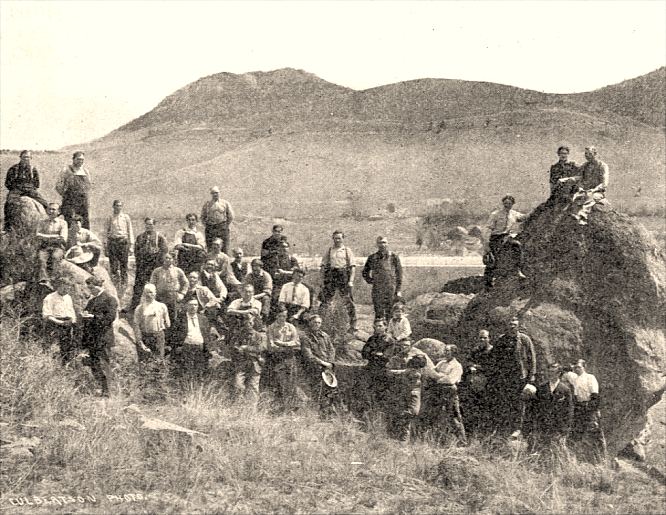
State
Nursery & Seed Co. employees, date unknown. They are gathered
at the "Saddlehorn" rocks on the hillside north
of the nursery. Some say the spot has mysterious qualities;
at least one person is buried there.
COURTESY
OF SCOTT NELSON - THE
BRIDGEWORKS CONSERVANCY
|
|
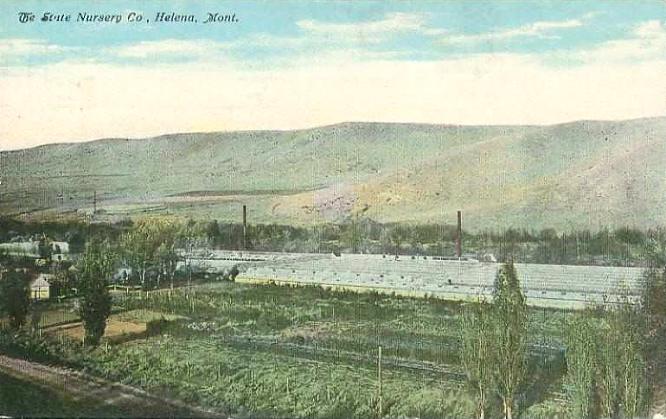
1910 Postcard
view of the State Nursery
|
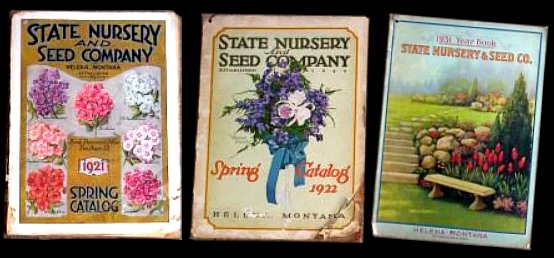
State Nursery
catalogs from 1921, 1922 & 1931.
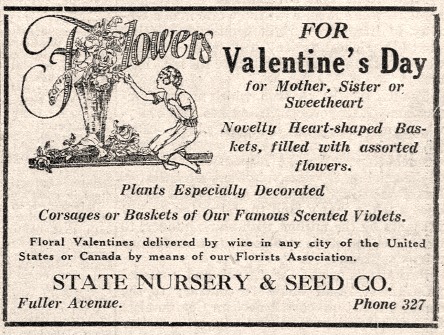
State Nursery
ad, 1920s.
|
|
|
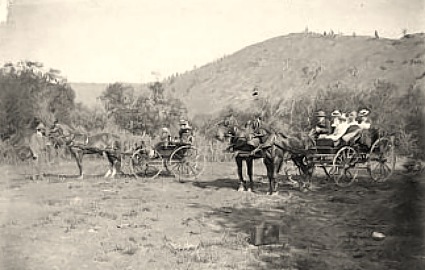
An outing near
Broadwater, west of Helena, ca. 1890.

|
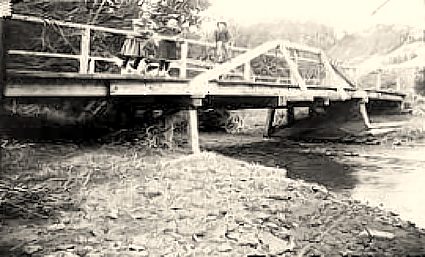
An unknown bridge
near Helena, ca. 1890. Possibly over Ten Mile Creek at Broadwater.
|


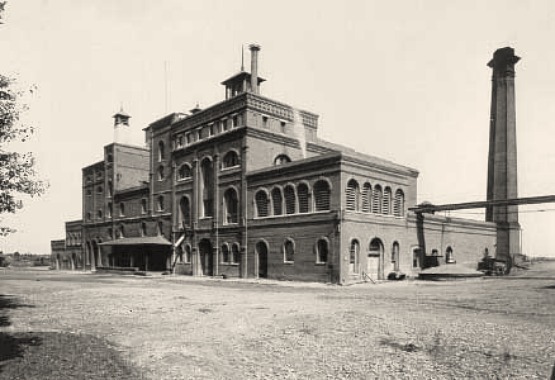
|
Kessler
Brewery, ca 1890. Founded in 1868 by German-born Nicholas Kessler
(1833-1905). Located just west of Spring Meadow Lake.
By all accounts,
Kessler was an exceptionally friendly, true and honest man,
and his death was widely mourned. Kessler also operated a brickyard
near the brewery, and in this way helped to build the city of
Helena.
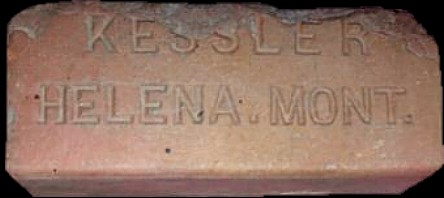
In 2001,
the 1860s Kessler mansion, located near the brewery, was heavily
damaged by a fire caused by a child playing with fireworks in
an adjacent barn, which was also destroyed.
|
|
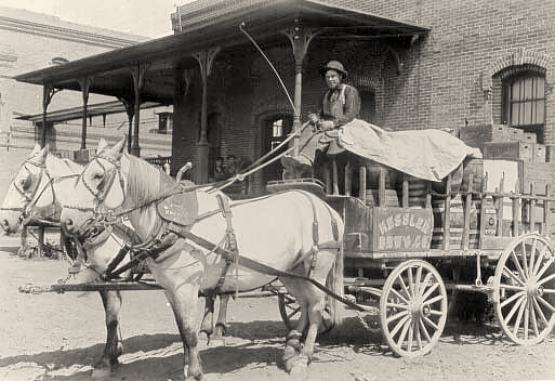
Kessler Beer delivery
wagon.
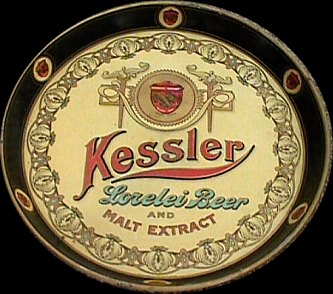
Kessler Brewery
advertising bar tray, ca. 1900.
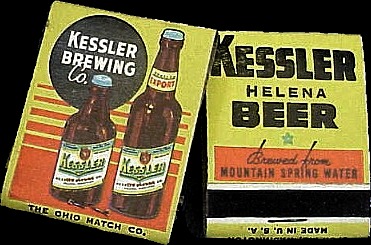
Kessler Brewery
matchbooks, 1950s.
|
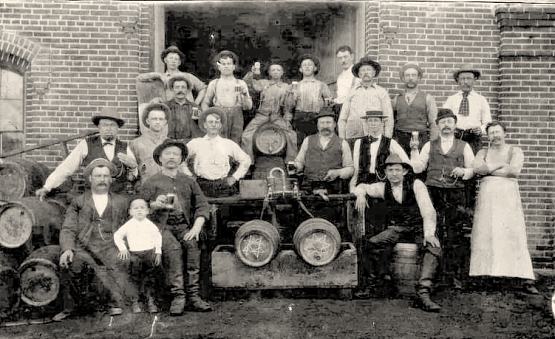
Kessler Brewery
workers, ca. 1880.
|


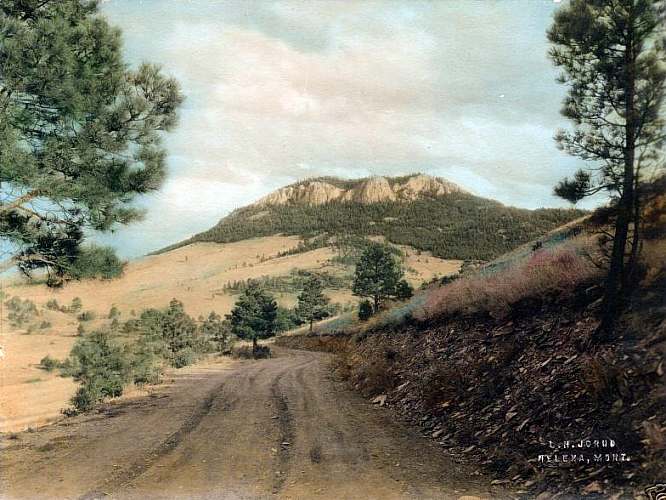
Mount Helena from
Le Grande Cannon Blvd., ca 1925.

|
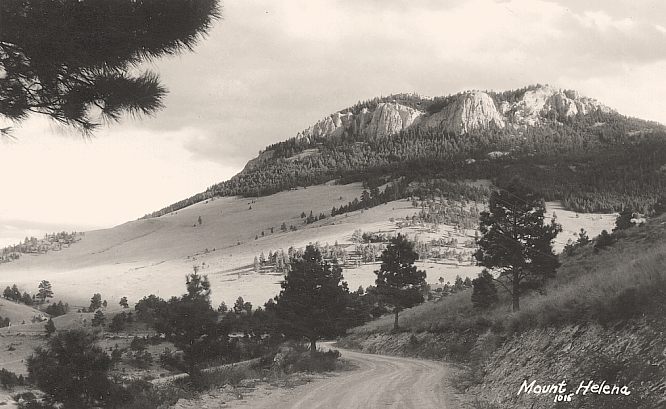
Mount Helena from
Le Grande Cannon Blvd., 1930s. COURTESY
OF TOM KILMER

|
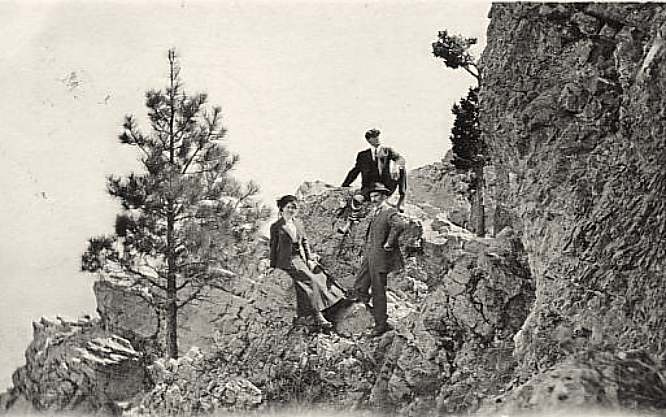
Hiking party wearing
suits on Mount Helena, 1911.

|
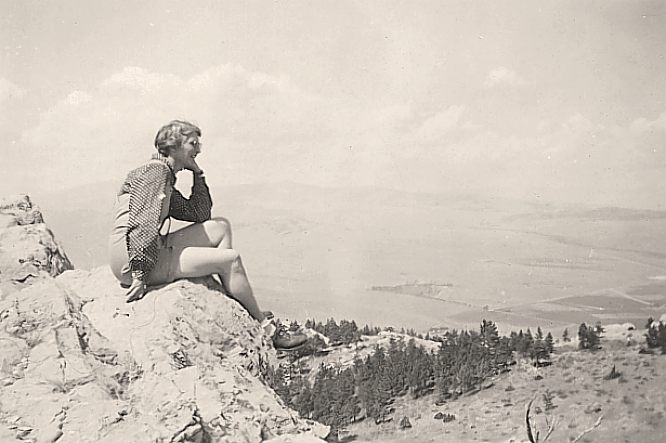
|
Looking
west from Mount Helena toward Fort Harrison, August 14, 1941.
The woman is Hazel Kilmer, who in a few months would join the
Women's Army Corps, serving as a parachute rigger in England.
COURTESY OF TOM KILMER
|

|
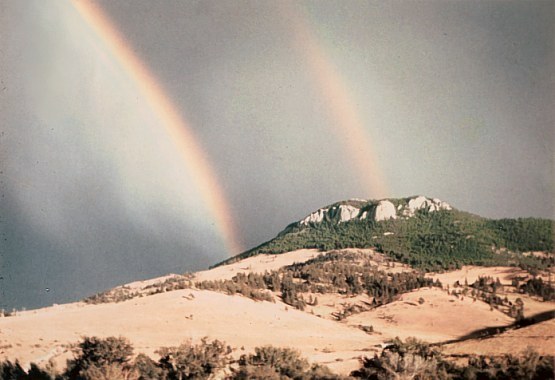
View of Mount
Helena from Broadwater, 1965.
COLLECTION OF KENNON BAIRD
|


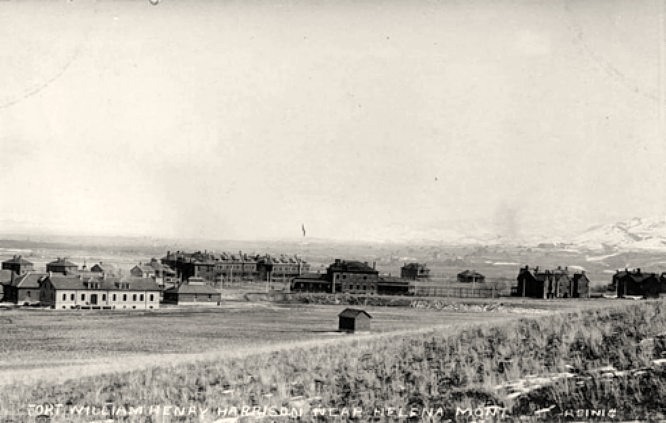
| Fort William
Henry Harrison, about 1910. Fort Harrison was authorized by an
act of Congress in 1892. The Fort was originally named Fort Benjamin
Harrison in compliment to the then President. The name was changed
in 1906 to eliminate duplication with a fort in Indiana. The military
reservation was acquired by donations through the efforts of Col.
C.A. Broadwater (who owned the adjoining Broadwater Hotel and
Natatorium), the local Optimist Club, and interested private parties.
The Fort
was built from 1894 to 1896. In 1895, a detachment of the Hospital
Corps from Fort Assinboine south of Havre and several small
military posts, which were scheduled to close in the Dakotas,
began training at the post. The Montana National Guard began
utilizing Fort Harrison for training in 1911, after abandoning
Fort Ellis near Bozeman.
Fort Harrison
was abandoned and left in the charge of a caretaker by the U.S.
Army in 1913. The Montana National Guard occupied the Fort in
September 1915, beginning the development of the military post
we see today. In June 1916, the Montana National Guard was notified
by the War Department to mobilize to guard the U.S./Mexican
border. With the start of World War I, the Guard was again trained
and mobilized in 1917 to protect major railroad and industrial
facilities, until they could be dispatched to eastern camps
and eventually overseas. After World War I, the Fort became
a Public Health Service hospital and eventually a Veterans Administration
medical facility (No. 72). During the first years, it was designated
as a tuberculosis hospital and expanded to 300 beds. In 1925,
the designation was changed to a general medical and surgical
hospital.
After the
October 1935 earthquakes that rocked the Helena area, the hospital
facility was closed and the patients transferred to facilities
in Washington and Oregon. The Hospital facility was reopened
in 1937. The Guard continued to use the reservation for training
after the earthquake.
During the
Second World War, the U.S. Army assumed control of the facility
and used it for very new and distinctive military units. These
units included the First
Special Service Force, the 474th Quartermaster Truck Regiment
and the War Dog Training Center (Camp Rimini).

Fist
Special Service Force Patch
Since 1947,
the Fort has been used for training by numerous active and inactive
combats, support and combat service support units. Numerous
major improvements and increased training facilities were completed
at Fort Harrison in 2001.
Fort Harrison
is the site of the Montana
State Veterans Cemetery, and the home of the Montana
Military Museum.
|
|
|

The
1968 MGM film "The
Devil's Brigade" dramatized the WWII exploits of
the First Special Service force, which trained at Fort Harrison.
The Fort Harrison and other Helena footage was shot at Camp
Williams near Lehi, Utah. One memorable scene from the film
is a barroom brawl between the soldiers and some hard-drinking
Helena locals, who for some odd reason are dressed like lumberjacks.
|
|
|
|
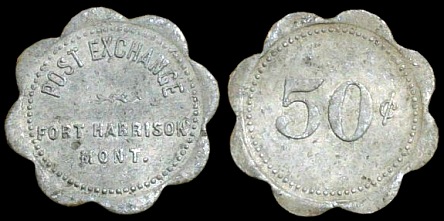
|
Rare
t oken from the Fort Harrison post exchange. Date unknown.
|
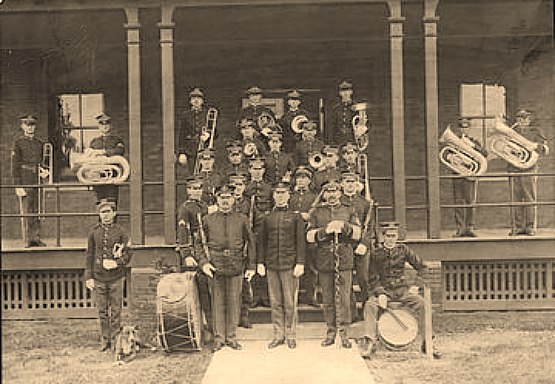
Fort Harrison
Band, about 1915.
|
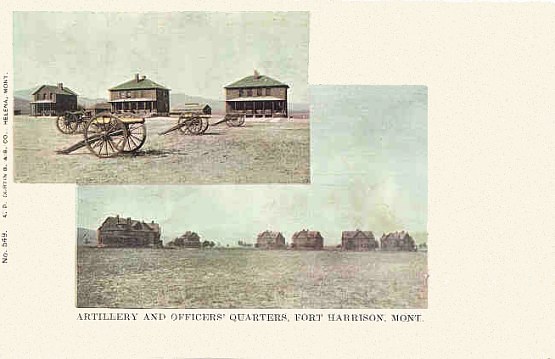
|
Postcard
featuring Fort Harrison, published by Helena's A. P Curtin Co.,
ca. 1900.
|
|
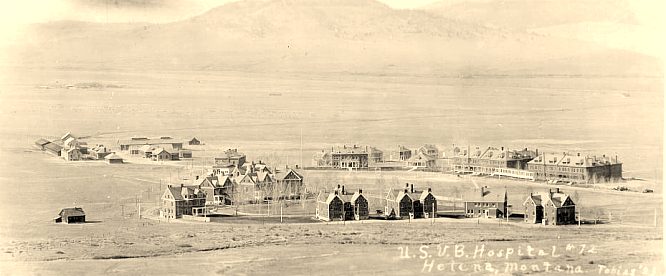
|
Fort
Harrison, looking NW from the hills, 1923.
|
|
|
|
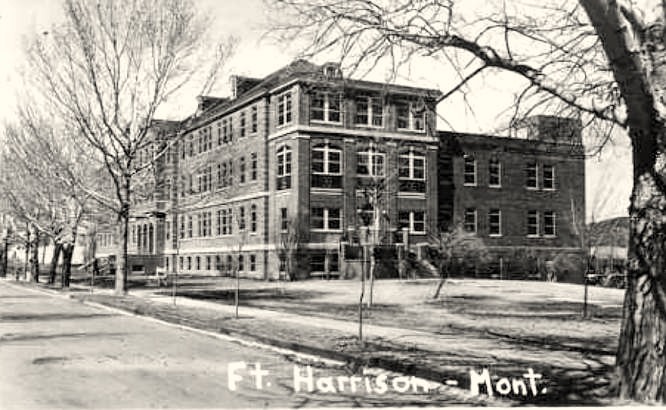
This building
housed the original hospital wards.
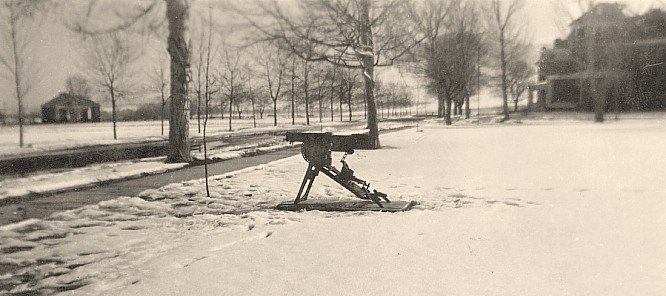
| Machine gun
on display at the Fort, 1940s. This was on the south side of the
circular drive which runs through the campus. COURTESY
OF TOM KILMER |


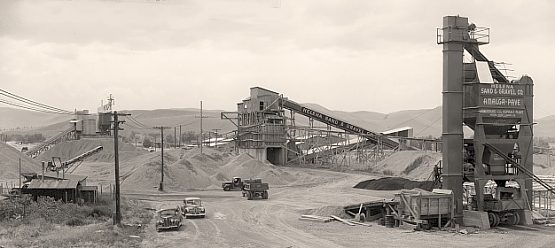
|
Helena Sand
and Gravel had its beginnings in 1929, partially a result of
the catastrophic 1928 downtown Helena fire. George Jacoby, son
of Charles Jacoby (a 2nd generation contractor, Frank Jacoby
and Son) saw the need for clean aggregates for construction
and railroad ballast in Montana. He bought 36 acres of tax title
gravel land two miles west of Helena, which included the old
stone John Stedman Foundry and Machine Company buildings, and
utilized the Jacoby Speeder shovel (used in the reconstruction
of downtown) to dig for gravel. The resulting pit opened up
underground springs, and it soon became an expanding lake.
Helena Sand
and Gravel also delivered ready-mixed concrete, and were involved
in large building projects in the Helena area. In 1951 Jacoby
got into the street paving business with the addition of an
Amalga-Pave cold mix asphalt facility.
Jacoby retired
in 1955, selling the business to W.A. "Bill" Carson
who further carved out the channels and islands of the lake.
Carson died in 1964, by which time the gravel had run out. A
real estate developer planned to build condos on the site, and
called it “Spring Meadow”, but the project was never
carried out.
In the early
1980s the State of Montana purchased the property for a State
Park. Remnants of the old Helena Sand and Gravel plant,
and the earlier Stedman Foundry - the future home of the Montana
Wildlife Center - can still be seen.
These
beautiful photographs are from the collection of artist and
graphic designer Kathryn
Fehlig, granddaughter of George Jacoby. Many thanks to Kathy
for sharing these wonderful images!
|
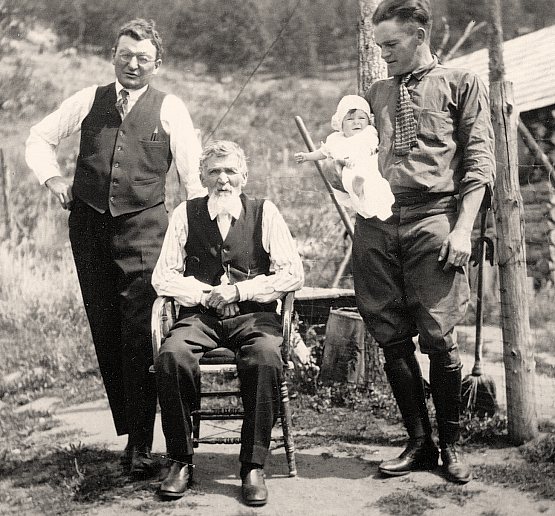
|
A Jacoby
family portrait from about 1922, taken near Lincoln, Montana.
Left to right: Charles Jacoby, Frank Jacoby, Dorothy Ann Jacoby,
and George Jacoby.
Frank Jacoby
was the pioneer, arriving in Helena before 1878. He was a carpenter
and formed a company with his son, Charles, called "Frank
Jacoby and Son." In 1915 Charles formed a partnership with
his brother Frank under the same name. George Jacoby worked
for the firm until forming his own business in 1929 (Helena
Sand and Gravel).
Frank Jacoby
and Son built many buildings in Helena during the first half
of the 20th century,
including St. Johns Hospital, the YWCA, the old Western Life
building, Shodair Hospital, Colorado Building, LaLonde Block,
Granite Block, 7th Avenue Gym, and Carroll College.
|

|
This
first series of photos was taken in 1929, and show the machinery
involved in the process.
|
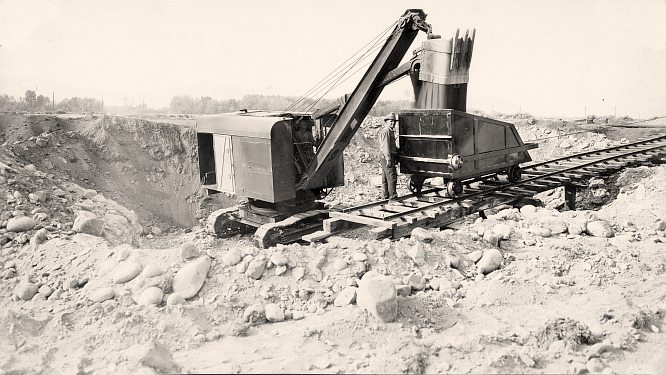
| Pictured
is George Jacoby opening the pit in August of 1929. The Speed
Shovel loads a 4 cubic-yard rolling skip.. |
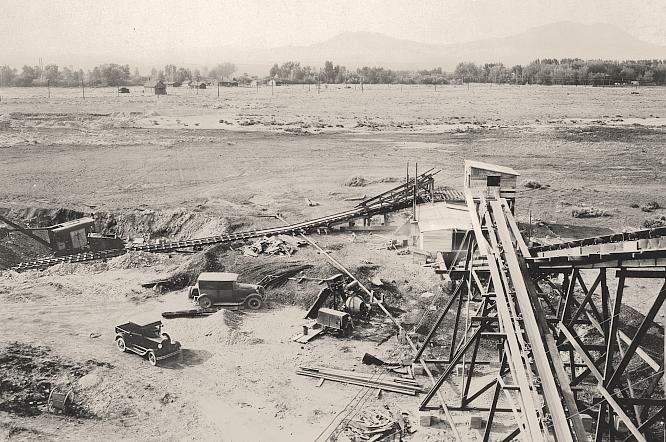
| Overview
of the operation, August 1929. At the center left is seen the
Speed Shovel and the skip. The loaded skip was pulled up the tracks
by an electric hoist housed in the structure with the sloping
roof. Once at the top, the contents of the skip was automatically
dumped through a grating made of railroad rails set ten inches
apart (called a "grizzley"). |
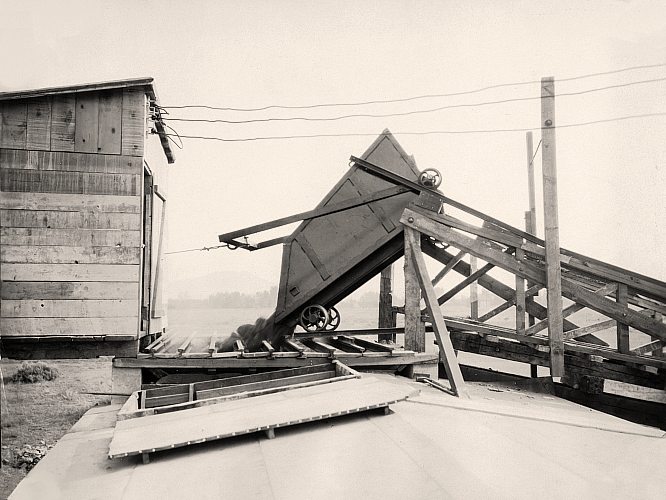
| The skip
discharging material through the grizzley, which screened out
the very largest stones. The electric hoist is in the wooden structure.
|
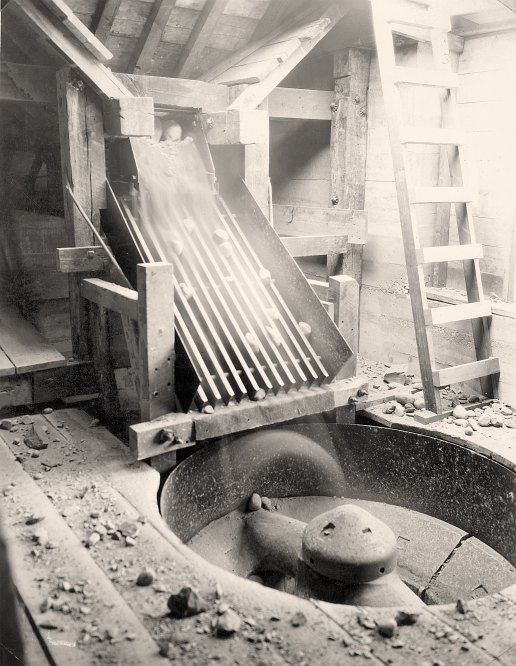
| The next
step for the material was a trip through this 24½"
x 5´ Telsmith Plate Feeder, a three foot by five foot wedge
bar grizzley further separated the stones from the gravel. We
also see the top of the 10-A primary breaker. |
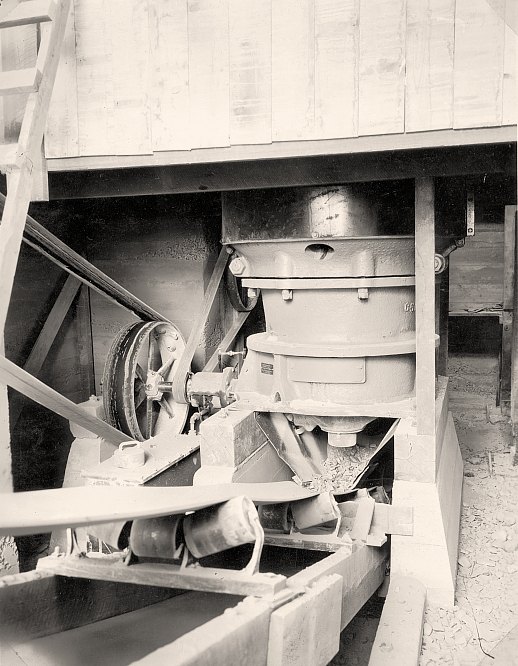
| A view of
the 10-A primary breaker, and the start of the 20 inch belt conveyor.
The breaker and feeder were driven by 40 hp Westinghouse Electric
Motor. |
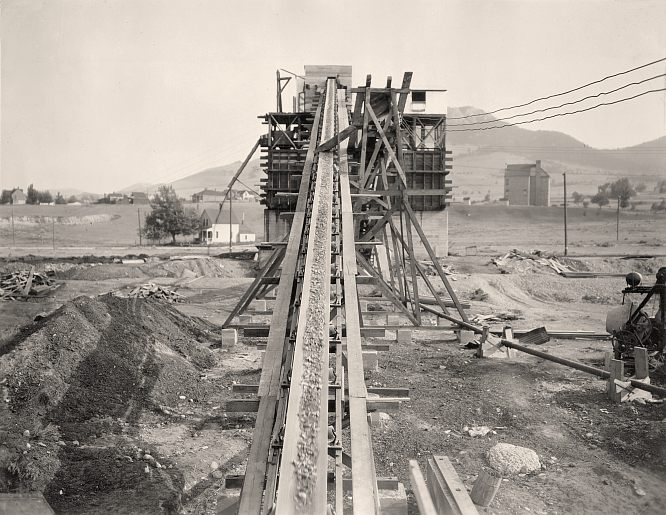
|
View from
the hoist, showing material traveling up the 20-inch conveyor
belt to the washer. At the right is the six-inch water pipe
running from the pump house to the washer. In the background
on the right can be seen the old Kessler School, which was demolished
after the 1935 earthquakes.
|
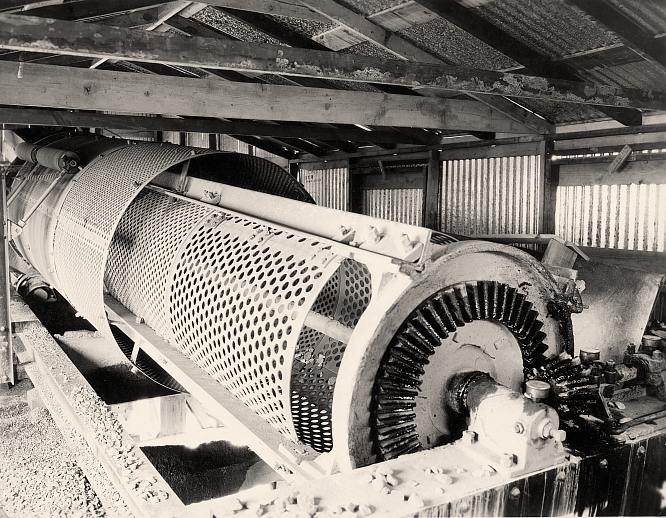
| The 40 inch
by 18 foot Ajax Gravel Washer, seen from the discharge end. It
was propelled by a 25 hp motor, which also drove the 20 inch belt
conveyor. |
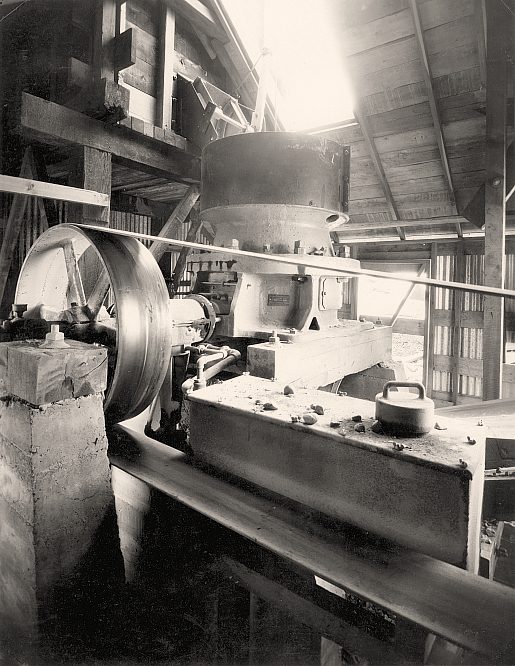
Side view
of the reduction crusher, which was propelled by 30 hp motor,
which also drove the 16-inch belt conveyor which discharged onto
the 20 inch belt, taking the product
ofthe reduction crusher. |
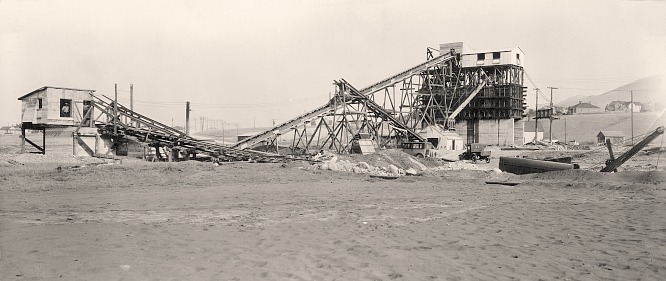
|
An
overall view of Helena Sand and Gravel, 1929. CLICK
ON PHOTO FOR A LARGE VERSION IN A NEW WINDOW
|
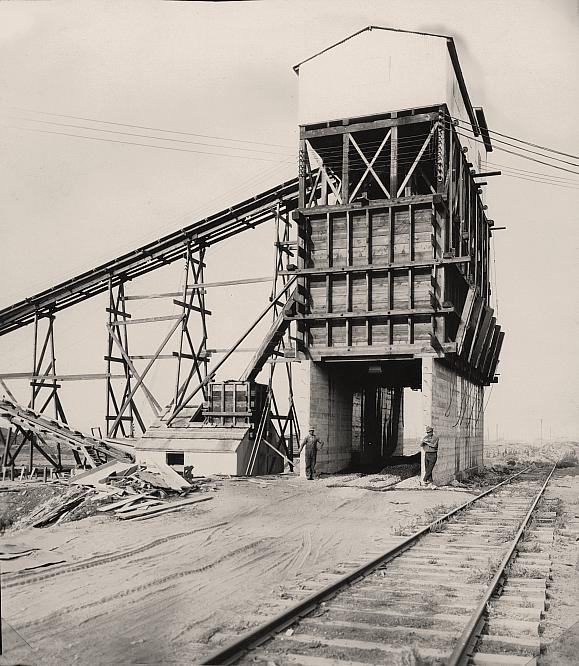
August 1, 1929.

THE FOLLOWING
IMAGES ARE FROM 1936 - 1951, AND SHOW THE GROWTH OF HELENA SAND &
GRAVEL

|
Looking
eastward at the operation in 1936. The underground springs had
been uncovered.
CLICK ON PHOTO FOR A LARGE VERSION
IN A NEW WINDOW
|
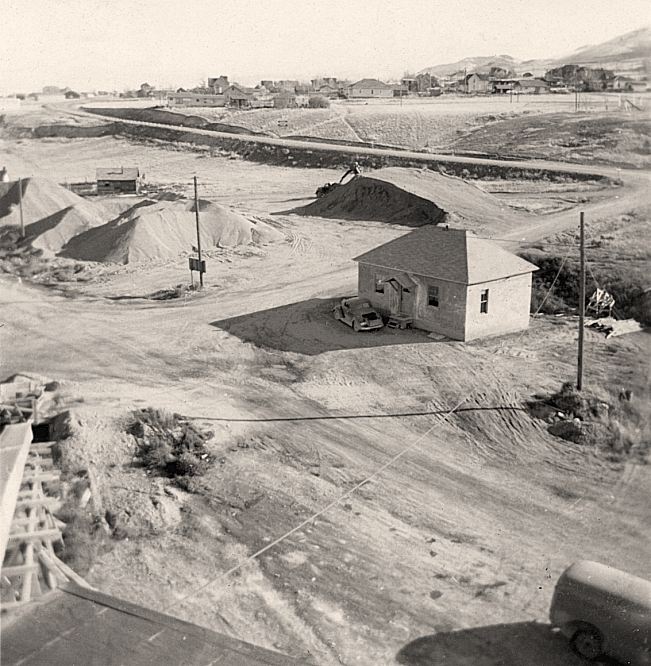
The Helena Sand
& Gravel Office, late 1940s.
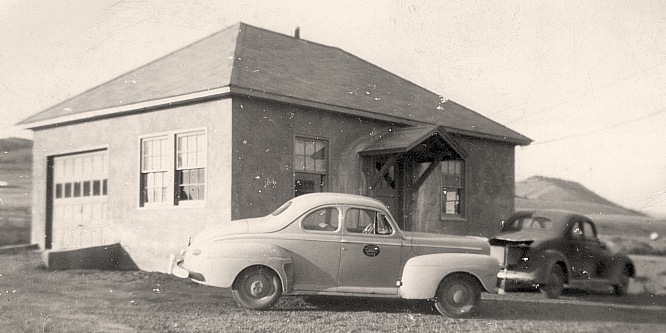
The Helena Sand
& Gravel Office, late 1940s.
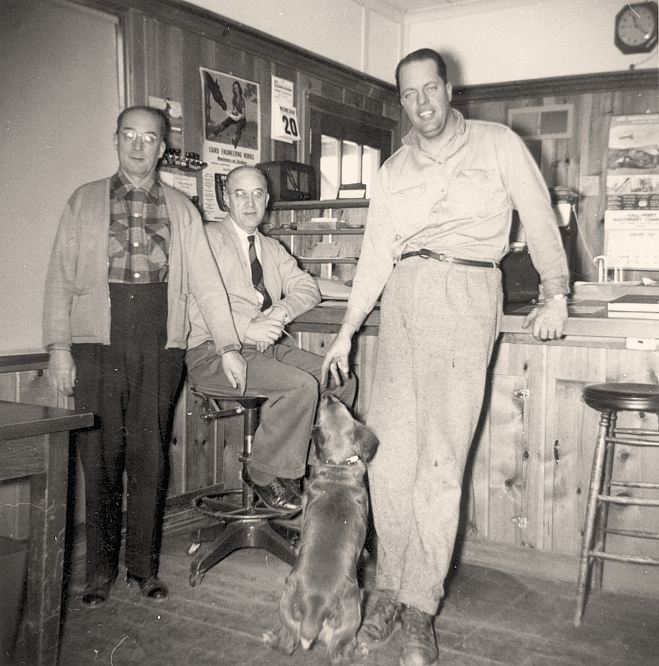
Helena Sand &
Gravel office interior. The men are unidentified, but the dog is "Major".
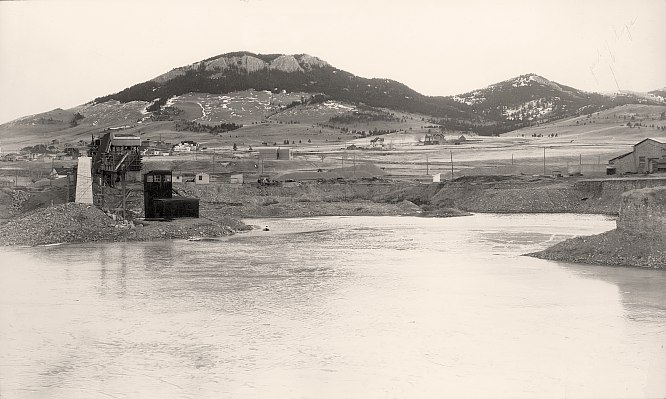
The pump house,
on the left. Taken January 10, 1939
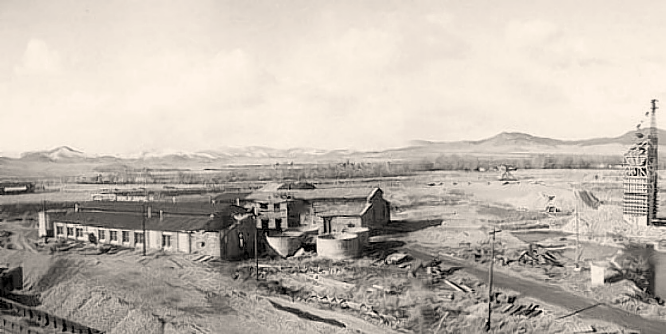 . .
Looking NW at
the old Steman Foundry buildings, date unknown.
THE DRAGLINE
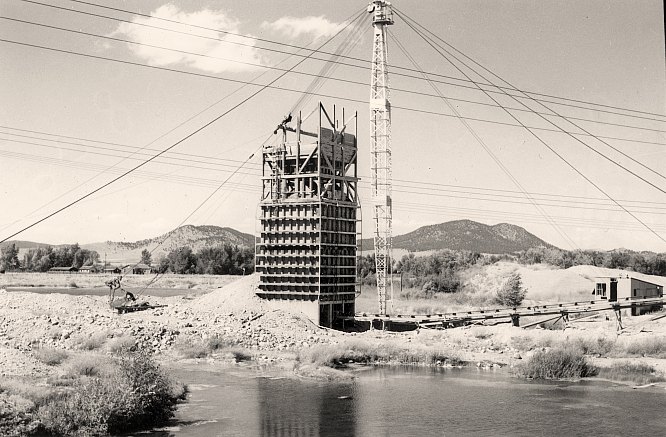
The Sauerman Bros.
dragline bin and mast, probably 1946.
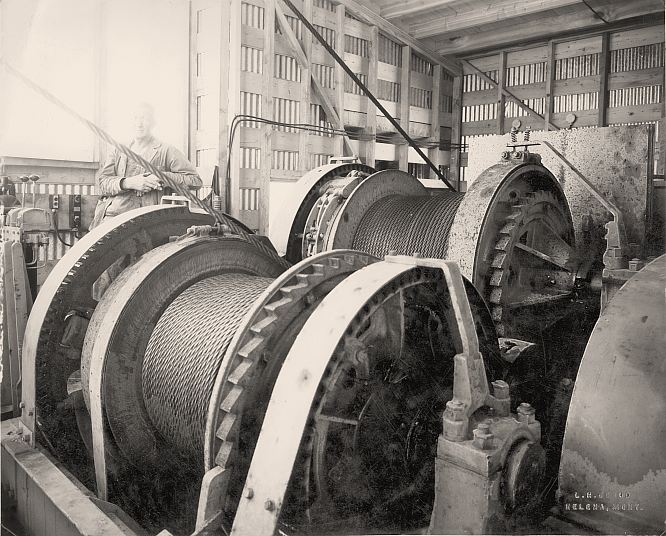
Part of the Sauerman dragline slack-line cable. Photo by Les Jorud.
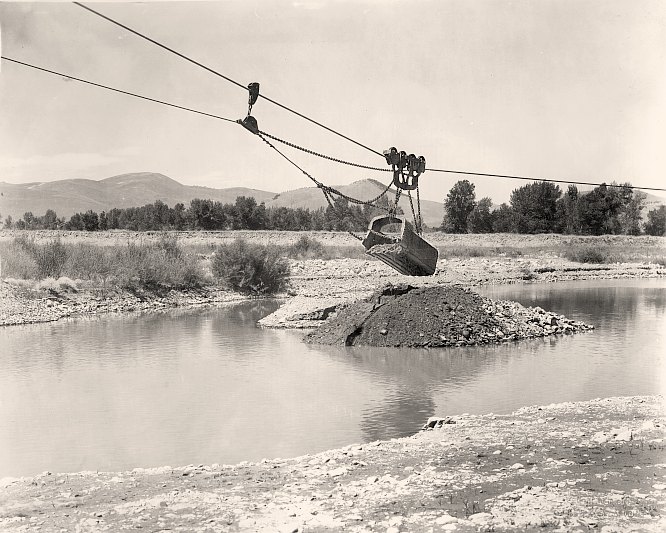
The dragline in
operation, 1947.
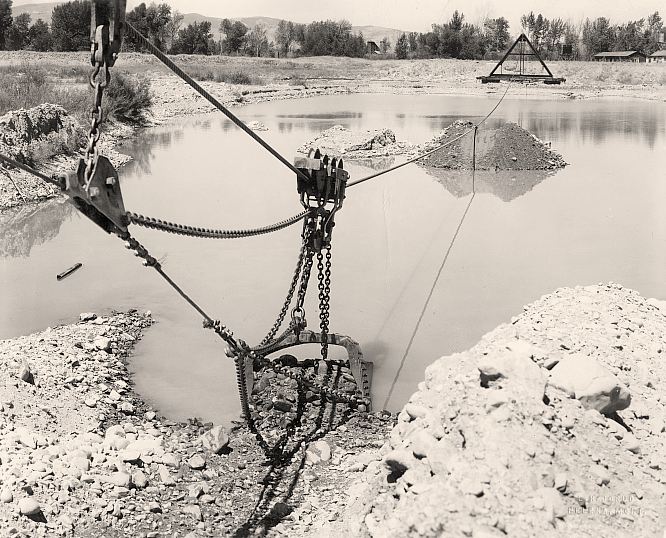
The dragline in
operation, 1947.
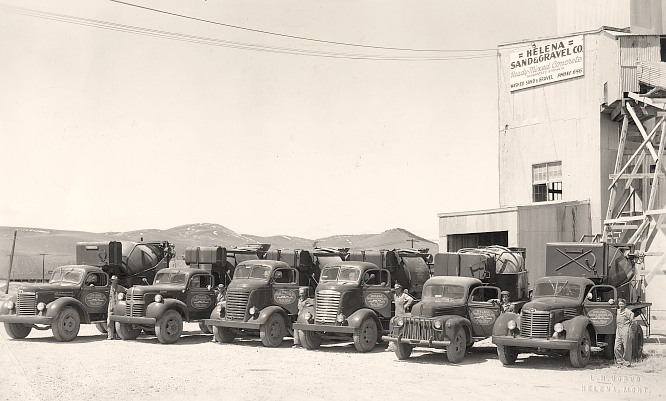
| Helena Sand
& Gravel truck fleet, May 13 1948. Photo by Les Jorud.
The drivers, from left to right: Tom Plovanich, George Heller,
S.L. White, A.C. Storlie, E.J. Kenda. CLICK
ON PHOTO FOR A LARGE VERSION IN A NEW WINDOW |
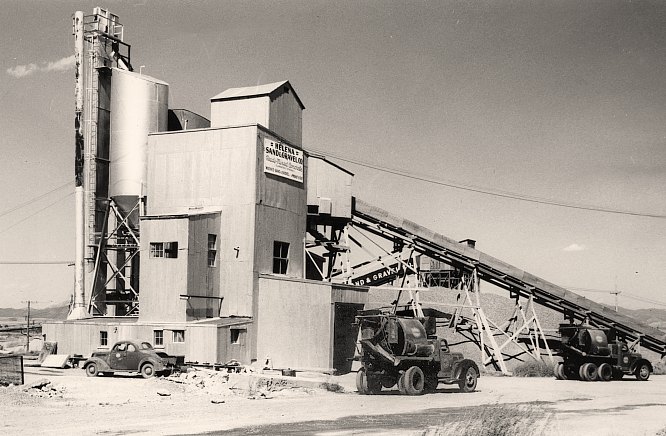
Helena Sand &
Gravel Ready-Mixed Concrete plant, about 1952.
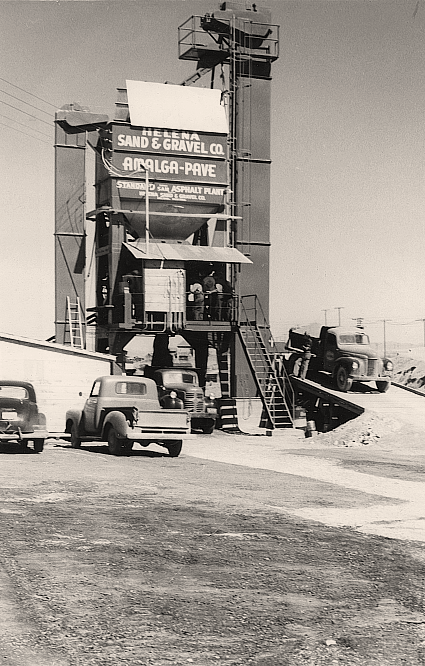
The Amalga-Pave
plant, about 1952.
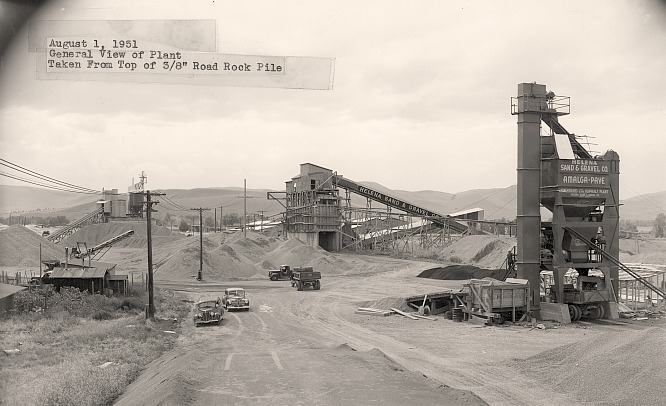
Looking west,
August 1 1951. CLICK ON PHOTO FOR A
LARGE VERSION IN A NEW WINDOW
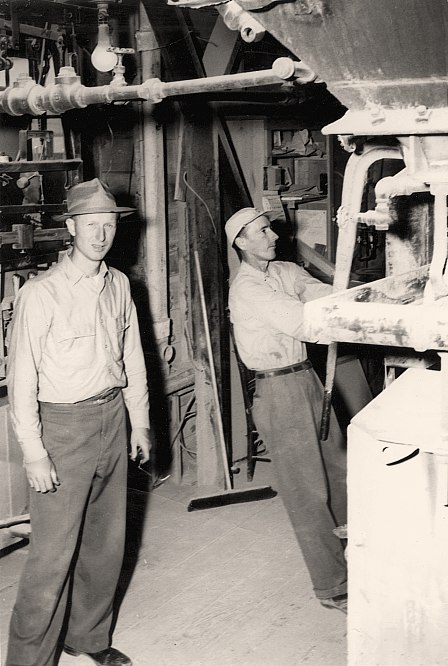
| Eugene Fehlig
(left) and an unidentified man. George Jacoby's only child, a
daughter, Dorothy Ann, married Gene Fehlig in 1943. In 1945, Gene
joined George in the gravel business and worked there until 1954,
when he moved his family back to his home town of St. Louis, Missouri.
|
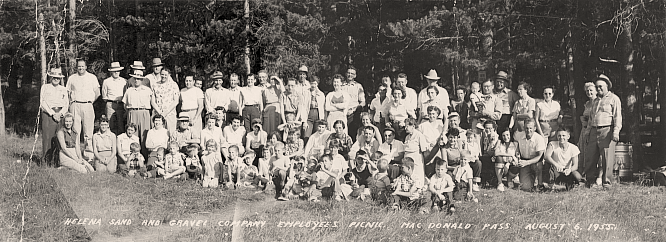
Helena Sand &
Gravel company picnic on MacDonald Pass, Aug. 6, 1955. CLICK
ON PHOTO FOR A LARGE VERSION IN A NEW WINDOW

|

| Panorama
of a Spring Street neighborhood in the Seymer Park (aka Broadwater)
Addition, 1965. Right-click on the photo above to download the
full-size1.2 MB file. |
COLLECTION
OF KENNON BAIRD

|
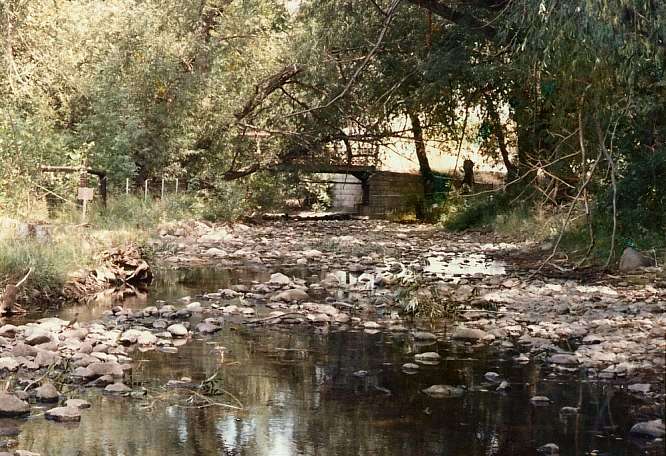
The 1894 Williams
St. Bridge over Ten Mile Creek, 1970.
COLLECTION OF KENNON BAIRD

|
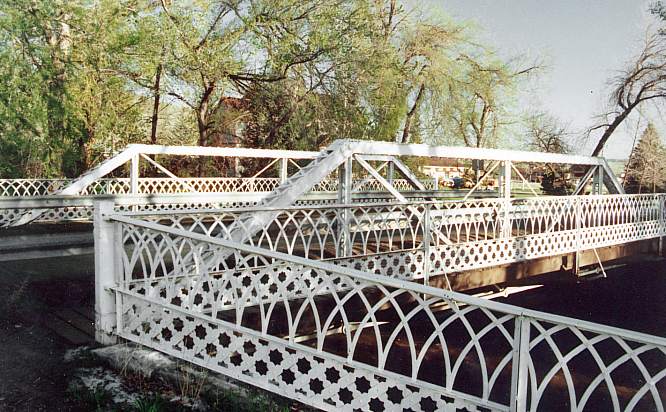
1894 Williams
St. Bridge, 1980s.
COLLECTION OF KENNON BAIRD

|
|
|
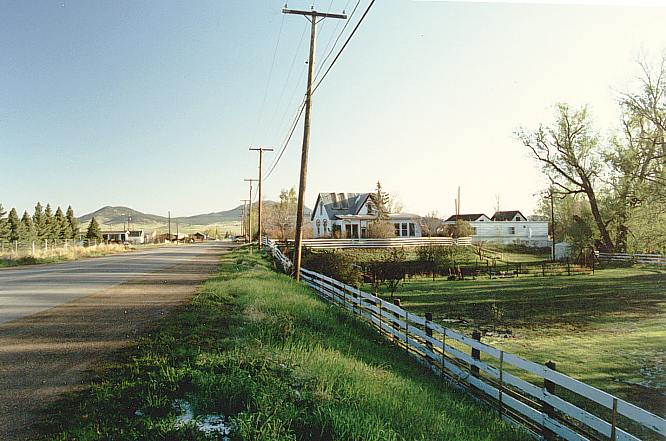
|
Looking
north on Williams St., just north of Ten Mile Creek, 1980s.
COLLECTION OF KENNON BAIRD
|

|
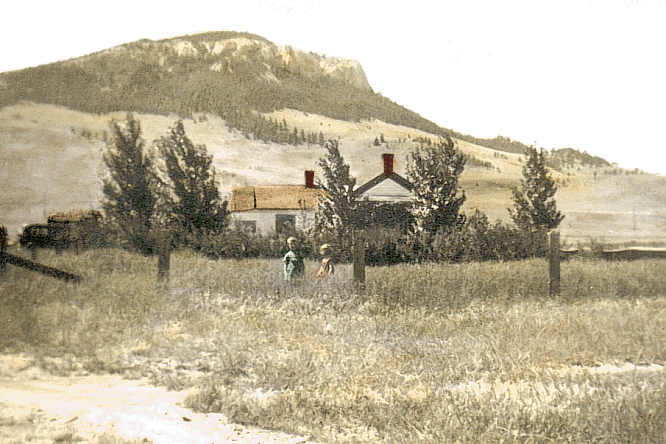
1400 block of
Cannon St,. 1937. This is now near C. R. Anderson School
THE WES AND CAROL SYNNESS COLLECTION

|



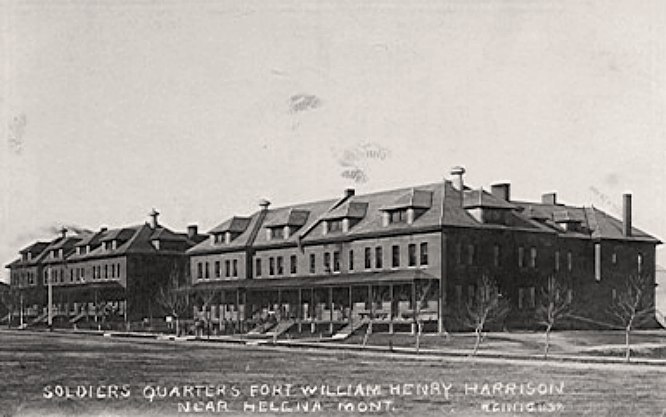
















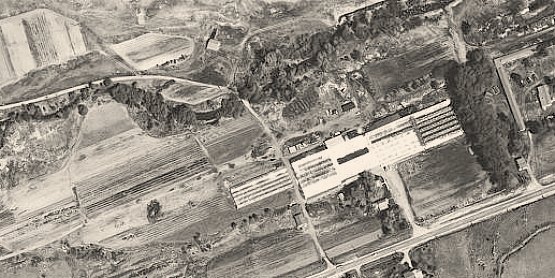




































 .
.












